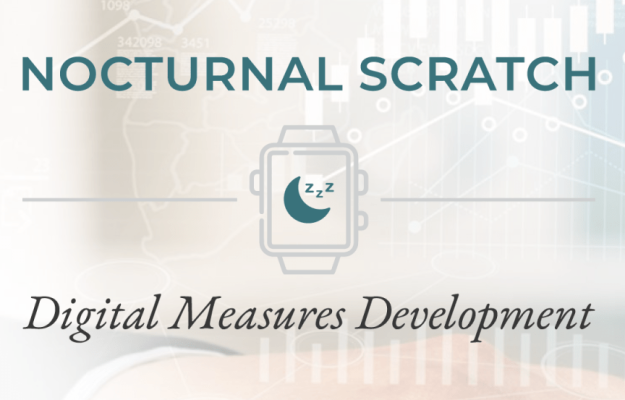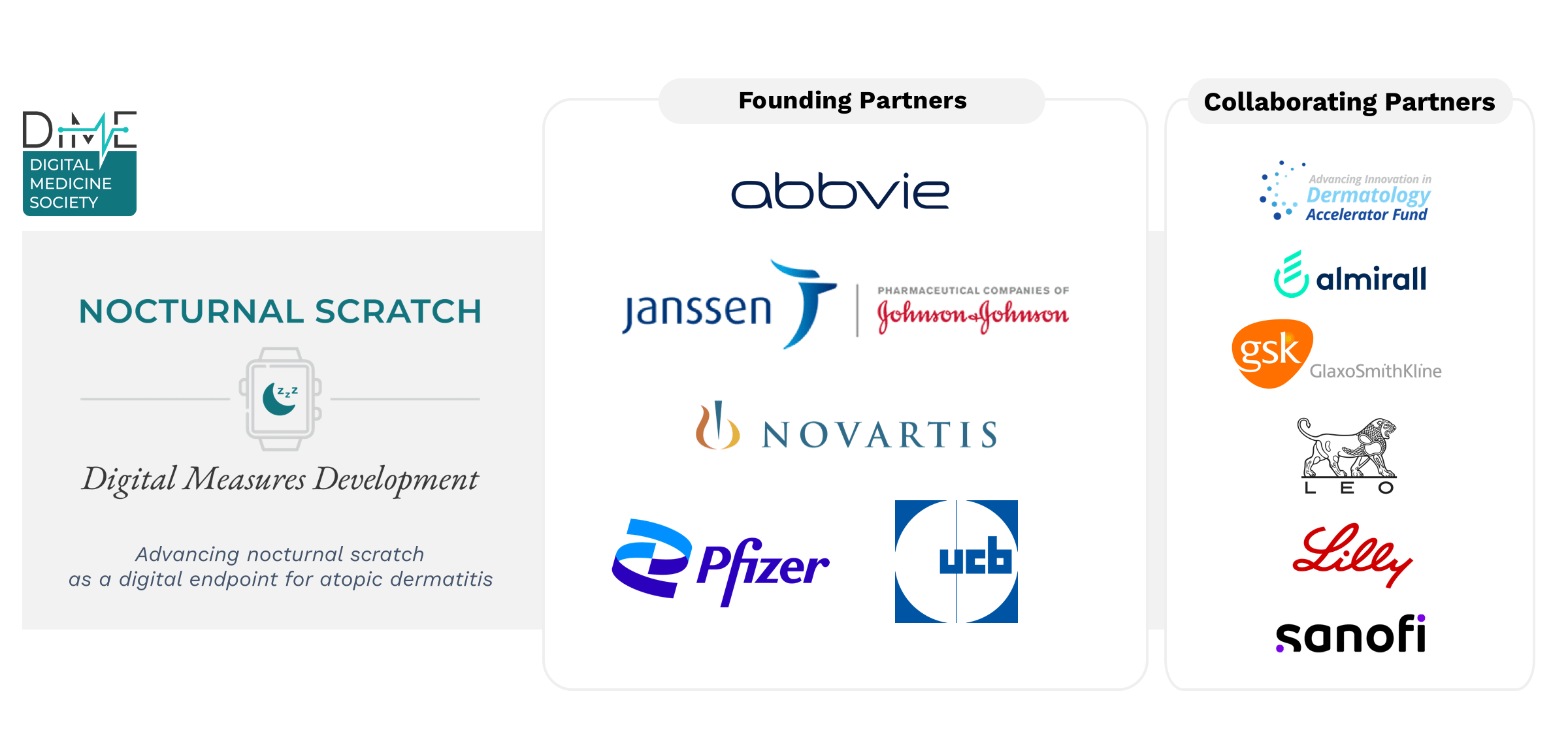
Digital Measures Development at DiMe: Collaboration Expands in the New Year
In November 2021, we were proud to announce a new collaboration with pharmaceutical leaders AbbVie, Janssen Research & Development LLC, Novartis Pharma AG, Pfizer Inc., and UCB to advance nocturnal scratch as a digital endpoint for atopic dermatitis. In just three short months, the initiative has both welcomed new collaborators as well as made significant progress in bringing a well-developed digital measure to bear as a broadly accepted digital endpoint for use in medical product development.
After the official launch of the project, our DiMe team received an incredible amount of inquiries from additional collaborators with interests in the dermatology space asking to become a part of this initiative. Today, we are thrilled to announce six new collaborators who share the vision of our founding partners: Advancing Innovation in Dermatology, Almirall, Eli Lilly, GSK, LEO Pharma and Sanofi. “This consortium can be the step to change our regulatory paradigm in regards to wearable usage in clinical development and support future collaborations for similar endpoints, and also support the larger shift towards decentralized clinical trial conduct,” says Bjarke Stokholm Stærkind, Senior R&D Product Manager at LEO Pharma. “Ultimately, digital measurements must become another element of the overall clinical outcome assessments used for assessing effectiveness of potential new therapeutics,” adds Brian E. Winger, Ph.D., Eli Lilly’s Sr. Advisor for Digital Health.

Since its launch the initiative has made significant progress, gaining IRB approval for its initial stage: qualitative interviews with adult atopic dermatitis patients and caregivers for child atopic dermatitis patients. Since IRB approval at the end of last year, the study has begun interviewing patients with eczema to learn more about their living experience with the condition and their night-time scratching. After the qualitative research is complete, a quantitative survey with 600 patients will follow to detail out the evidence collected from the patients.
Additional project workstreams have been initiated as well, with a total of four initiatives now underway. The first is the above described study to establish nocturnal scratch as a concept of interest deeply rooted in meaningful aspects of patients’ health. Second, the group will also develop inputs and recommendations on best practices in deployment in digital technologies measuring nocturnal scratching in clinical trials. Next, the project partners will propose a unified terminology for the measurement of nocturnal scratch scratch measure concepts, informed by the body of scientific evidence and industry expertise. Last but not least, explore the value model and assessment of market size associated with digital measurement of nocturnal scratch for atopic dermatitis. Outputs of these activities shall start appearing on the project website as we continue to develop final products of the group’s work.
“Great progress has already been made within the Digital Endpoint of Nocturnal Scratch Initiative that launched late last fall,” comments Carrie Northcott, Director & Research Lead for Digital Endpoints at Pfizer. “The work that has been undertaken has already made great strides in understanding the significance of nocturnal scratching to patients and caregivers, how to make this endpoint a reality operationally, as well as alignment of terminology regarding this novel digital endpoint. All of these things can and will only be of benefit to patients and caregivers moving forward.”
With this laser-focused team and an enormous amount of expertise to share, this initiative is well on its way to launching its first set of deliverables to drive the broad acceptance of nocturnal scratch as an evidence-based, meaningful endpoint for atopic dermatitis. I’m proud to be a part of this amazing group where the compounded expertise and experience is larger than just the sum of names and logos. Together we believe we’ll be able to address the ‘last mile problems’ of digital measures development and acceptance for use as drug development endpoints, while creating and pressure-testing a new agile model for collaboration. DiMe and our partners and collaborators will work to position those involved to lead the field in global best practice as they translate this work in a single context of use to other therapeutic areas and other measures. We are hopeful this will become a repeatable blueprint to apply in following future digital measure development initiatives at DiMe and across the industry.
